The Perplexing Disappearance of Varig flight 967
On the 30th of January 1979, Varig flight 967 departed Narita International Airport (Tokyo) for a cargo flight to Rio de Janeiro–Galeão International Airport in Brazil. Half an hour after departure, it disappeared. Not very much is known about what happened but when people ask me how it can possibly be that MH370 has never been found, I always think of Varig flight 967. It’s been forty years and we still don’t have a clue what happened.
The lack of information about Varig flight 967 makes it interesting and I had hoped to include it in the second volume of Without a Trace. Unfortunately I can’t write about everything and I couldn’t let this book go on forever. As is so often the case in these mysteries, I found a dozen different threads of interesting and unexpected information while doing my research. One reason I really enjoyed writing Without a Trace was having the space and the time to be able to follow these threads and see what I might found. As such, I’m thrilled to be able to share one of these stories with you online.

Varig (Viação Aérea RIo-Grandense or Rio Grandean Airways) was the first Brazilian airline, founded in 1927 by a German aviator who moved to Brazil in 1921. Their first aircraft, which was also the first aircraft registered in Brazil, was a Dornier Do J Wal flying boat named Atlântico.
The Do J had a high-mounted strut-braced parasol wing with two piston engines mounted in tandem in a central nacelle above the wing; one engine drove a tractor and the other drove a pusher propeller. In the military version (Militärwal in German), a crew of two to four rode in an open cockpit near the nose of the hull. There was one machine gun position in the bow in front of the cockpit and one or two amidships.
Varig did away with the machine gun and used it as a cargo and passenger aircraft; it could carry up to ten passengers. The airline expanded rapidly after World War II and became the leading airline of Brazil. In 1965, it became Brazil’s only international airline after taking over European services from Panair do Brasil.
The accident aircraft was a Boeing 707-323C built in 1966 and sold to American Airlines, who sold it to Varig in 1974. The Boeing 707 was a mid-sized, long-ranged, narrow body which was in production from 1958 to 1979, with a total of 865 aircraft produced. The 707 was Boeing’s first jet airliner with four Pratt & Whitney engines located in pods below the wing which almost all modern large jets use now as they offer many benefits, ranging from relief from wing bending to easy maintenance access to reduced noise in the passenger cabin. The Boeing 707 entered passenger travel with Pan American World Airways in 1958 and quickly came to dominate air transport, becoming known as the airliner which introduced jet travel. The 720, 727, 737 and 757 are all based on the 707’s fuselage design.
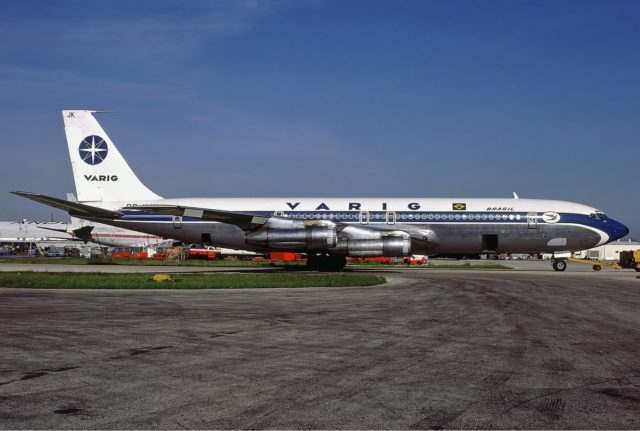
Today there are no more 707s in commercial airline service but, in its time, it was involved in 246 major aviation occurrences. This is the only one where the cause is unknown.
In the Boeing 707-323C registration PP-VLU, on the 30th of January 1979, there were six flight crew on board for a cargo flight. They were transporting paintings by the Japanese-Brazilian artist Manabu Mabe.
Manubu Mabe was born in Japan but he grew up in Brazil, as his parents and four siblings emigrated to a rural village in the interior when he was ten.
I remember the Brazilian nature unfolding before my eyes: fish swimming in the shallow waters of the lagoons and parrots fighting over a ripe guava.
He had the crayons from his Japanese elementary school and he drew the beautiful sights of Brazil as often as he could, which he said was really just on rainy days and on Sundays.
Ten years later, in 1945, the coffee harvest was ruined by unexpected frost and the young man found himself with unexpected time on his hands. He bought oil paints at a local bookstore and began painting landscapes on cardboard and wooden boards, any surface that he could find.
In 1957, once his siblings were independent, Mabe took a great leap. He sold the coffee plantation which he was now running with his wife and children, and the young family moved to São Paulo, where he hoped to make his living as an artist. He started by selling hand-painted ties from the street. “It was embarrassing and illegal,” he told Time magazine. “I had no peddler’s license, but they sold fast.” He used the money to buy oil and canvases, using the nights to paint.
Slowly but surely, he made his name and became an established artist in Brazil; he also took Brazilian nationality. His reputation started to grow and, in 1979, his paintings were exhibited in Tokyo for a special exhibition.
These paintings were part of the cargo in Varig flight 960. Estimated to be worth over a million US dollars, they were being shipped back home to Mabe in Brazil after the exhibition in Tokyo.
The cargo flight carrying the paintings had a flight route planned from Tokyo with stops in Los Angeles, California and in Lima, Peru on the way to Rio de Janeiro, Brazil.
There were six flight crew on board for the long flight: the captain, the first officer, two second officers and two flight engineers.
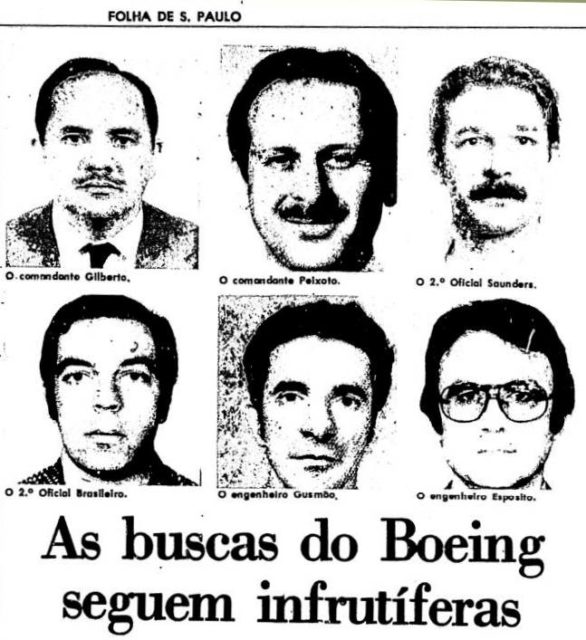
The captain, Gilberto Araújo da Silva, was already considered a hero in France and Brazil, after he landed Varig flight 820 in onion fields south of Orly, avoiding crashing into the populated areas of Paris.
In 1973, a fire started in the toilet of Varig flight 820, with the probable cause of a cigarette. One hundred and twenty three people were killed, mostly of carbon monoxide poisoning and smoke inhalation.
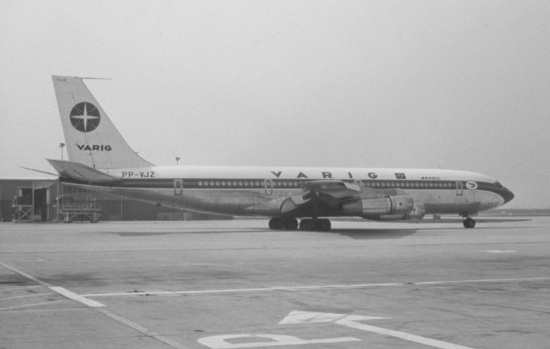
The scheduled flight from Rio de Janeiro to Paris-Orly was on approach for runway 26 when the flight crew contacted Orly to state they had a problem with fire on board and needed an emergency descent. The fire was at the rear of the plane and the cabin was filling with smoke. At 13:59 the flight was given clearance to descend to 3,000 feet for runway 07, to allow the aircraft to make a straight-in landing.
Meanwhile, smoke was entering the cockpit and the flight crew, who were wearing oxygen masks, were struggling to read the instruments. At 14:03, the captain attempted an emergency landing 5 kilometres short of the runway.
The aircraft landed on a field, where both main gears collapsed and the engines were torn off. By the time the firemen arrived, the fire had burned through the roof. Ten occupants evacuated through the roof and firemen rescued four unconscious occupants but only one survived. One hundred and twenty three were killed from the inhalation of the smoke, most of them dead before the plane even landed.
It was quite clear that the Boeing 707 would never have made it to the runway and the captain was applauded for having saved lives by not crashing into an inhabited area.
The fire had started in the washbasin unit of the aft right toilet. The FAA responded directly to this accident with the requirement to install warning placards and ashtrays in all aircraft.
It’s safe to say that the captain, at least, was experienced and knew how to deal with an emergency. At the time of the flight, he had logged over 23,000 hours.
Flight 967 to Rio de Janeiro departed Narita International Airport on time. Twenty minutes after take-off, the crew contacted Narita Tower for a routine check-in, reporting that they were 500 km from the coast (about 300 miles). The next call was expected about 40 minutes later but it never came. The tower controllers attempted to make contact for the next hour but received no response. They declared an emergency and the Japanese Air Force and Navy immediately set up a search. The following morning, the Japanese coast guard and the US Air Force joined the search.
Aircraft and ships scoured the area for the next eight days, trying to find any sign of the Boeing 707 but no wreckage or trace of the cargo and crew were ever found. At the time, the Brazilian media stated that it was the only commercial jet to have disappeared without leaving a single trace, with no distress message and no wreckage found.
This, of course, led to a number of theories, exactly as we have seen with Malaysian Airlines flight 370.
Many believed that the aircraft had been hijacked in order to steal the artwork. The cargo included over 50 of Mabe’s most valuable paintings, worth over a million dollars at the time. But none of these paintings has ever resurfaced.
Others believe that the aircraft had blundered into Soviet territory and was shot down, just as Korean Airlines 902 had been the year before.
Or it was possible that the flight was intercepted and forced to land in the Soviet Union, as some believed that a dismantled Mikoyan-Gurevich MiG-25 was included in the cargo for delivery to Los Angeles.
Three years earlier, in 1976, a Soviet air force pilot named Viktor Belenko had defected in his MiG-25 to Hokkaido and offered asylum by US President Gerald Ford. The fighter jet had only become operational in 1970 and was the primary interceptor and reconnaissance aircraft of the Soviet Union. It seemed likely that the Soviet military would do most anything to keep their powerful fighter jet out of American hands.
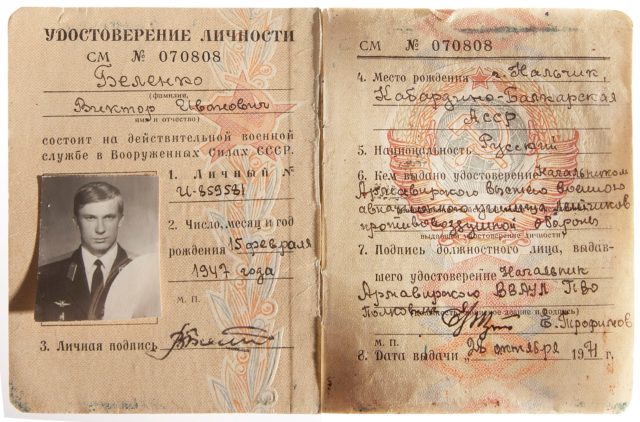
Certainly, it is true that Belenko’s defection gave the US its first opportunity to learn about the aircraft; his defection was described by the director of the CIA (George H W Bush, who became president in 1989) as an “intelligence bonanza”. It’s a matter of public record that Belenko delivered the MiG-25 manual to US intelligence and later became a citizen of the United States. The Soviet Union initially claimed that the pilot had been captured by the Japanese, where he was injected with drugs to force him to talk. Once the pilot defected, the KGB spread the news that he had been killed in a car crash, presumably to dissuade others from following in his footsteps. Meanwhile, the pilot made a life for himself in Kansas where he said in an interview that he was particularly impressed with the supermarkets.
It has always been a hard task in Russia to find tasty tinned goods. But in the USA I bought different tinned foods every day, and they were all very good. Once I bought a tin where was written Dinner and fried its content with potatoes, onions and garlic – it was delicious. Next morning my friends told me that I had eaten tinned chicken for cats. But it was delicious!
Meanwhile, in 1976, the MiG-25 was a problem: Belenko had landed in a civilian airfield at Hakodate and there were not the resources to examine it there. But it was too large to transport in another Japanese aircraft and no one knew how to fly it. The fighter jet was dismantled and transported to a Japanese military base on a US Air Force Lockheed C-5A Galaxy. The Soviet government sent Japan a demand for $10 million for the damage to the plane; Japan retaliated with a charge of $40,000 for the damage to Hakodate Airport and shipping costs. Neither bill was ever paid.
The fighter jet was analysed at the military base, breaking the secrecy surrounding the MiG-25, and, according to Wikipedia, it was then packed into “around 40 boxes” and returned to the Soviet Union at the end of 1976, at which point the Soviets complained that around 20 pieces were missing. However, there’s no citation given for any of this information and I was unable to find a trusted historical source as to what happened to the MiG-25. Still, it doesn’t seem likely that the pieces ended up in the back of Varig flight 967 three years later.
I also found two references in the Brazilian press that some said that the aircraft had been abducted by aliens but actually, I found no evidence that anyone actually believed that to be the case.
The investigation at the time did not give credence to any of these theories, instead concluding that the flight suffered an unexpected depressurisation. The flight crew lost consciousness about 30 minutes after take off, with the Boeing continuing on the same altitude and heading until it ran out of fuel and crashed somewhere in the Pacific Ocean.
And that’s where the story ends, with no further leads and no reason to believe that we will ever find out what has happened to Varig flight 967.
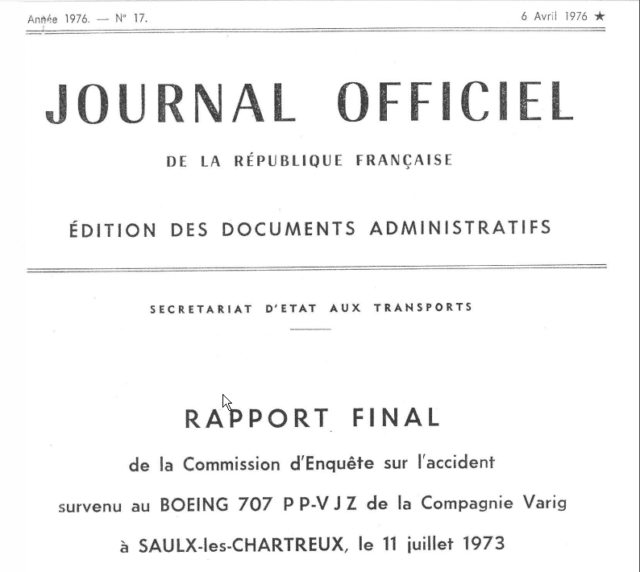
The BEA’s investigation report, in French, has been scanned and uploaded to the BEA website: Rapport Final
If you want to know more about Victor Belenko’s theft of a MiG-25 and defection, I recommend BBC Future: The Pilot Who Stole a Secret Soviet Fighter Jet
The story of Varig flight 820 is from my own site: Why do aircraft still have ashtrays in the lavatory?
And finally, the story of Korean Air Lines flight 920 and the much more mysterious Korean Air Lines flight 007 are both covered in detail in Without a Trace: 1970-2016.
(PS: The book hasn’t actually received any reviews on Amazon at all and the page looks a bit lonely. If you have read it and enjoyed it, I’d love it if you could post a sentence or two on the Amazon.com page so that other people can judge whether it is something they might enjoy.)








List of defector pilots
United States and North Atlantic Treaty countries
USA
Images.png External Images
Image-silk.png Bobby Joe Kesey
× On March 23, 1962, US Army soldier Sergeant Bobby Joe Kesey flew to Havana on a rented Piper Comanche from Marathon. At a press conference for the Cuban press, he stated that he had deserted from the army. Kizi asked the Cuban authorities for political asylum, which he was denied. He stayed in Cuba for 49 days, after which he was transferred to the United States, where he was convicted and sentenced to five years in prison, of which he departed two and was released for good behavior.
Yes In July 1963, Roberto Ramos Michelen, a member of the US Air Force flight crew, flew to Cuba on a Beechcraft Mentor training plane [53] (the only hijacking of a conditional military Air Force aircraft).
Yes On May 21, 1967, a participant in the Vietnam War, Bronze Star holder, Major Richard Harwood Pearce, 36, who was authorized to work with sensitive materials and served as adjutant to the commander of the 4th Army based at Fort Sam Houston, Texas, taking with him the board of his four-year-old son, Richard Pierce Jr., flew from Key West to Cuba on his own Cessna 150 private plane and received political asylum there [54]. Pierce became the highest-ranking American military defector since the beginning of the Cold War [55]. Radio Havana issued a statement on behalf of Pierce, stating that he had escaped according to personal convictions. Representatives of the US federal authorities said that he escaped because of family troubles rather than political reasons, because after the divorce from his wife and her remarriage, the child was left to be educated by her and her new husband, stepdad Pierce Jr. [55]. In 1979, he returned to the United States [56].
Another five servicemen of various services of the United States Air Force, unable to hijack a plane, fled to the Soviet Union, the GDR and to Cuba, using other transport:
Yes In February 1959, US Air Force soldier Libero Rikkyardelli, after taking leave, went to Moscow, becoming a defector in his homeland in the US, received Soviet citizenship, and gave an anti-American speech at a press conference for the Soviet press on July 19 [57] [58 ] (later passed on the case of the murder of US President J. Kennedy). [59]
Yes. On August 1, 1960, a military man of the US Air Force flight crew, Serafin Sánchez, left his Air Force Base in South Carolina without permission, in his own words: “Protect your Homeland, Cuba, from American aggression.”
Yes In 1968, a US Air Force soldier, Staff Sergeant J. W. Wright, left his military unit without permission and fled in an unspecified way to the USSR, where he asked for political asylum, and in 1969 appeared on television screens, stating that fled to the Soviet Union because of American aggression in Vietnam.
No A 1st class technician from the US Air Force Special Investigations Bureau, Robert Glenn Thomson, was recruited by Soviet intelligence in June 1957, and while serving in West Berlin, he handed over hundreds of secret technical documents and images of the latest technology to which he had access. However, American counterintelligence calculated Thomson and failed to fly or escape by other means – he was captured in July 1963 and received a 30-year prison sentence, which was serving in Lewisburg, Pennsylvania. In 1978, the USSR and the USA exchanged captured spies (in exchange for Thompson, the Soviet Union betrayed an Israeli pilot shot down in Mozambique and an American spy captured by the Stasi), after which Thompson ended up in the USSR.
Yes. US Air Force intelligence officer Jeffrey Carney was recruited by the Stasi in the early 1980s, and handed over a large number of secret documents. In 1984, he was transferred back to the United States, to Goodfellow’s air base in Texas, where young pilots were trained, and his access to sensitive information was no longer possible, and in 1985, he escaped to the GDR through Mexico.
Yes?
Regarding the MiG-25, I found several references to the a/c being returned to the USSR in pieces – although there are conflicting accounts regarding its further fate.
One contemporary source is e.g. here: https://www.nytimes.com/1976/11/12/archives/japan-starts-returning-soviets-mig.html
Hello,
I have had a life long quest and hope I find the answer before I die. On April 22?, 1960 we flew in from Sao Paulo, Brasil to Rio De Janeiro and then were on to Miami in what I believe was Varig Airlines. I was 6 1/2 years old. We hit a major lightening and thunderstorm and had to make an emergency landing in the jungle.
Suit cases had to be thrown off the plane to lighten the plane for an emergency landing. I have information on my Brasilian passport but it is hard to read. Can you help me and tell me where the emergency landing was?
God bless you and Thank You for any help you can give me on the information I have been seeking?
Luba Titorov Davis
[email protected]
It doesn’t seem to be in the database at https://aviation-safety.net/database/dblist.php?Year=1960 , which means it’ll probably be hard to find.
You seem to say you crashed in Brazil, is that correct?
Do you remember any details about the plane that may help identify the plane type?
Have you contacted CENIPA (Centro de Investigação e Prevenção de Acidentes Aeronáuticos) in Brazil? Maybe they have a better database.
The plane did not crash. It made an emergency landing in the Amazon area. The normal route in 1960 according to my brother, who came on a later date and another plane, the planes refueled in Rio de Janeiro, Manaus, and Bogota, Colombia. Our plane landed in a remote jungle with torches for lighting on April 22/23 of 1960 due to a severe lightening storm. I think it was a Varig 4 propeller plane. I lost my Portuguese abilty to speak or read when I had to learn English so the website won’t help me. I really don’t think it was in Manaus according to my sister. I appreciate any help anyone can provide in this life long quest to find out where the emergency landing occurred.
1979 Flight 967: Few days prior to the disappearance of the plane, the person responsible to confirm the cargo contents was given, out off the blue, two weeks holiday. The person who replaced him was killed one week after the aircraft vanished. The death of this man was reported on Brazilians press. The man given the sudden holiday was living in LA studying English in an adult’s school around 1981-1983.
Very interesting, you wouldn’t happen to have access to these sources or know the names of the men involved?
Noone has really given any credence to a possible hijacking.
Just a quick note to say you got caught up in the moderation queue but I’ve now pre-approved you so your comments will go through automatically.